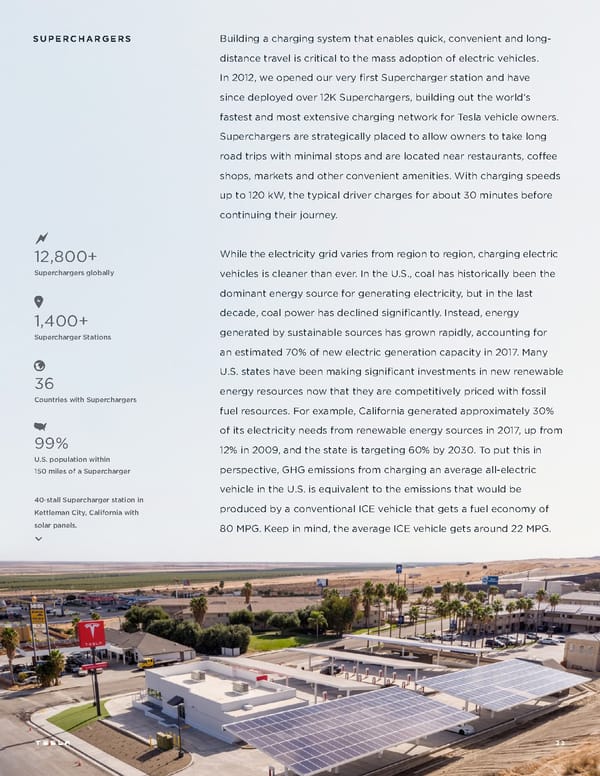SUPERCHARGERS Building a charging system that enables quick, convenient and long- distance travel is critical to the mass adoption of electric vehicles. In 2012, we opened our very first Supercharger station and have since deployed over 12K Superchargers, building out the world’s fastest and most extensive charging network for Tesla vehicle owners. Superchargers are strategically placed to allow owners to take long road trips with minimal stops and are located near restaurants, co!ee shops, markets and other convenient amenities. With charging speeds up to 120 kW, the typical driver charges for about 30 minutes before continuing their journey. 12,800+ While the electricity grid varies from region to region, charging electric Superchargers globally vehicles is cleaner than ever. In the U.S., coal has historically been the dominant energy source for generating electricity, but in the last 1,400+ decade, coal power has declined significantly. Instead, energy Supercharger Stations generated by sustainable sources has grown rapidly, accounting for an estimated 70% of new electric generation capacity in 2017. Many 36 U.S. states have been making significant investments in new renewable energy resources now that they are competitively priced with fossil Countries with Superchargers fuel resources. For example, California generated approximately 30% 99% of its electricity needs from renewable energy sources in 2017, up from 12% in 2009, and the state is targeting 60% by 2030. To put this in U.S. population within 150 miles of a Supercharger perspective, GHG emissions from charging an average all-electric vehicle in the U.S. is equivalent to the emissions that would be 40-stall Supercharger station in Kettleman City, California with produced by a conventional ICE vehicle that gets a fuel economy of solar panels. 80 MPG. Keep in mind, the average ICE vehicle gets around 22 MPG. 22
 Tesla Impact Report | 2019 Page 21 Page 23
Tesla Impact Report | 2019 Page 21 Page 23